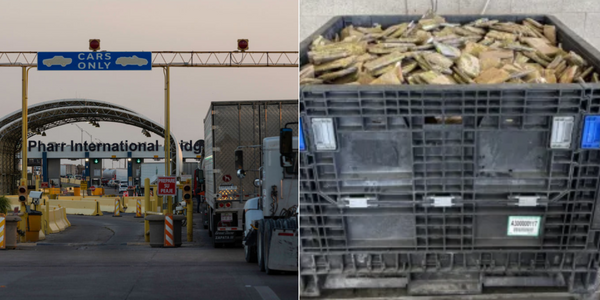
For most homeowners a request from a passerby to touch the exterior of their house would probably raise eyebrows. But for the owner of Nina’s House, which is covered with unusual and striking cork insulation panels, it is not only a common occurrence but is welcomed.
The conversations may start with curiosity but much of the time lead to lengthy, passionate discussions on how to make homes more energy efficient, says the house’s owner, Nina Woodcroft. “We are new to the neighbourhood and it has been a really nice way to engage with our new community. A lot of delivery drivers will be like: ‘What’s this?’, and we’ll have a chat for 10 minutes about cork, you know, instead of just like this transactional, thank you, bye.”
Woodcroft and her family moved into their home in south Tottenham, London, at the end of 2023 and it has now been nominated for a number of awards including Don’t Move, Improve and RIBA London. The house was a “leaky” 1970s property built originally as a clergy house. Woodcroft, who runs the design company Nina+Co, decided that instead of an extension they would design a renovation, with the help of architects ROAR, to transform it into an energy-efficient, fossil fuel-free, cosy family home.
“Our architect was saying that it was unusual the way we’ve decided to spend our budget. That most clients would be like, well let’s do a loft conversion, let’s add another floor or let’s do a side return, but the motivator for us was to make what we have already future proof and really efficient,” says Woodcroft.
After removing the gas supply entirely, Woodcroft and her team installed an air source heat pump in the front garden. To maximise the pump’s efficiency the radiators downstairs were stripped out and replaced with underfloor heating. Sheep wool, wood fibre and a recycled plastic fleece, with cork granules, were used to insulate the home internally. The annual energy bill is about £1,088, significantly below the national average, with only electricity used.
They chose dark expanded cork, an increasingly popular building material, to cover the exterior of the house because of its insulating properties, sustainability as a material, and aesthetic appeal.
“The way that it’s manufactured is cork granules, bits of the bark of the cork oak tree are heated and pressed into a panel at the same time. Something is released called suberin, a natural substance as it’s heated, which is what sticks those cork granules together. So there is no added binder. And that’s what makes that product really natural,” says Woodcroft.
The inside of the property, designed with running children in mind, is as thought through as the property’s exterior, with joinery made from local and reclaimed timbers, kitchen countertops constructed from recycled plastic and a kitchen island formed from a London plane tree that was felled in Soho Square by Westminster council.
“I feel grounded and connected in this house because of the natural materials I think. It’s warm underfoot, which my feet really appreciate. The house feels enveloping and calming, like a little retreat from the busy world outside,” says Woodcroft.
The design company was born out of Woodcroft’s frustration with the lack of care for the environmental impact of materials used in the design industry. Nina’s House is the latest in a string of projects by Nina+Co to transform property interiors into sensual, textured spaces with a minimal environmental impact, such as the interiors for the restaurant Silo in Hackney Wick, east London, the world’s first zero-waste restaurant and winner of a Michelin green star. The Silo design used offcuts of timber, foraged seaweed, mycelium (a biodegradable fungal material), and crushed glass bottles.
Woodcroft says: “I am kind of always thinking about what life this [material] is going to have next: a restaurant, a shop, a home … it will have a certain lifespan that’s actually not very long in the grand scheme of things of the planet. And so I’m always trying to think what’s the next life of this and how to retain longevity and value in something.”
She hopes her renovation will inspire others to be more conscious of the types of materials used in property design and take small steps to make their homes more sustainable and energy efficient.
“I’m really up for sharing knowledge with people … Not everyone will have the financial resources to do a project like this, or the time and the energy because they’re busy with work and just need to pick a floor … but if it can inspire just doing one little thing, swap out one material, that would be amazing.”







